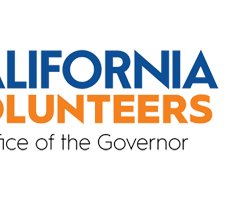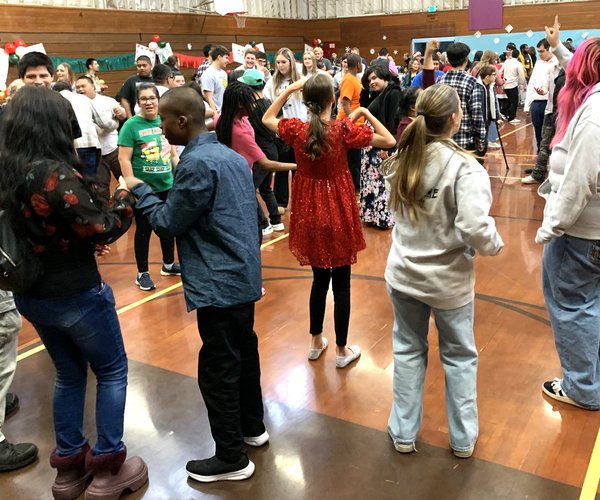The recent successful robotic-assisted, minimally invasive direct vision coronary artery bypass graft (MIDCAB) surgery by Dr. John deGraft-Johnson and the surgical team at Doctors Medical Center (DMC) in Modesto is thought to be the first of its kind in the largest part of California and possibly all of California. The patient was able to return home after two days and is recovering well.
“It’s exciting to be able to provide this complex heart surgery option, and some of the techniques we’re doing at DMC – on a daily basis – rival that of the greatest medical centers in the country,” said Dr. deGraft-Johnson, who performed and directed the surgery. “It all went exactly as planned, but I want to emphasize that it’s not just me: it’s a team of highly trained and highly skilled professionals that genuinely care. The patient is doing remarkably well and, really, that’s why we do what we do.”
Robotic assisted Coronary Artery Bypass Graft (CABG) surgery, in contrast to open-heart bypass surgery, is a minimally invasive procedure that uses a high-technology robot (commonly called “the da Vinci” after the manufacturer’s name). This physician-controlled device executes the surgical steps through small incisions between the ribs via the da Vinci’s robotic arms and a camera that allows for direct vision of the procedure. The robotic arms manipulate tiny instruments and have the advantages of greater range of motion, greater access due to the small size, and more precision than a surgeon’s unassisted movements.
“This is the first Minimally Invasive Multivessel CABG in the region, to my knowledge,” said Dr. Dan Bethencourt, Assistant Clinical Professor of Surgery at Stanford University Medical School’s Department of Cardiothoracic Surgery. “Using the da Vinci to mobilize the LIMA (Left Internal Mammary Artery) is notable, as it can be expected to greatly reduce pain during recovery.”
Dr. Bethancourt is an expert with broad knowledge of the robotic assisted CABG field in California: In the past five years, he has helped launch robotic cardiac programs at Stanford and UC San Francisco. He is also well-recognized for initiating the robotic cardiac surgery program at Memorial Care Long Beach Medical Center, which is a da Vinci XI Surgical System Mentor Case Observation Site that trains surgeons on using the robot to perform thoracic surgery procedures, such as CABG. Thoracic surgeries are procedures for the organs of the chest, including the heart, lungs, esophagus, trachea, diaphragm, chest wall, and mediastinum. Pete Carnegie, the CEO of Minimally Invasive Solutions – a national company that trains physicians to use the da Vinci robot for MIDCAB surgery – believes that the procedure might not only the first in the Central Valley, but it may also be the first multi-vessel robotic assisted MIDCAB in California.
“To the best of my knowledge of the robotic cardiac market in the USA, Dr. deGraft-Johnson has completed the first robotic multi-vessel MIDCAB in California,” said Carnegie. “The majority of robotic cardiac programs in the USA only do one graft; Dr. deGraft-Johnson demonstrated a high level of mastery of the da Vinci surgical system and of the CABG procedure to do a total of three grafts.”
The robotic CABG surgery at DMC was particularly intricate. Dr. deGraft-Johnson was able to harvest the LIMA with the robot and then performed a mini-thoracotomy – also known as Video-Assisted Thoracic Surgery (VATS) – that utilized the LIMA and vein grafts to perform a two-vessel bypass for this patient.
“Three grafts are remarkable in that patients with multiple blocked coronary arteries can come to Doctors Medical Center and potentially receive a multivessel CABG without having a sternotomy (open heart surgery),” said Carnegie. “The level of skill indicates to me that Dr. deGraft-Johnson can also work with the cardiologists to perform a robotic hybrid multivessel CABG on patients with four, five or six blocked arteries by involving a cardiologist. This could create an opportunity to help many of the sicker patients who would not be candidates for a sternotomy but who need the life-saving CABG procedure.”
Not only does the success of the surgery signal that the capability for state-of-the-art, minimally invasive chest (thoracic) surgeries being available in California, it also shows that the next wave of physicians is being trained to practice these procedures. DMC is a teaching hospital whose residency agreement with UC Davis includes a rotation for thoracic surgery and Chief Resident Sarah Chen, MD, participated in the recent multi-vessel robotic assisted CABG surgery.
“I am proud to have been part of that historic day with Dr. deGraft-Johnson,” said Dr. Chen, who extended her three-month rotation to six months to be able to continue with the DMC thoracic surgical team. “When it came time for the surgery, as a team, we were confident. We sat down in advance and went over every detail of what to expect. It’s amazing how one surgeon can have such an impact.”
Doctors Medical Center, part of the Central Valley Doctors Health System, is the largest full-care hospital between Stockton and Fresno, and from the Sierras to the San Francisco Bay Area, with a 394-bed general acute care and a 67-bed inpatient psychiatric capacity. Doctors Medical Center offers a wide range of services including cardiology, neurosurgery, orthopedics, emergency and trauma services, minimally invasive and robotic surgery, women and children’s services, medical/surgical, behavioral health, oncology and critical/intensive care.





